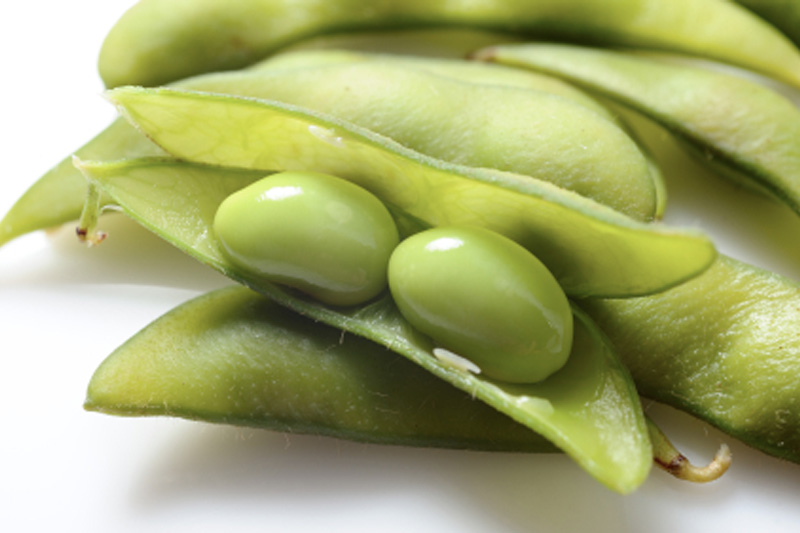Investing.com - U.S. soybean futures declined for the first time in four sessions on Friday, as investors cashed out of the market to lock in gains from a recent rally which took prices to six-week highs.
On the Chicago Mercantile Exchange, US soybeans for July delivery dipped 6.2 cents, or 0.64%, on Friday to close at $9.7140 a bushel. Prices of the oilseed rallied to $9.8160 on Thursday, the highest level since May 11.
For the week, the July soybean contract jumped 31.25 cents, or 3.37%, the fourth consecutive weekly gain, amid growing concerns over U.S. crop conditions.
Nearly 67% of the soybean crop was in good to excellent condition as of June 14, according to the U.S. Department of Agriculture, down from 69% in the preceding week and compared to 73% in the year-earlier period.
Almost 87% of the soybean crop was planted, below the five-year average pace of 90% for this time of year.
Elsewhere on the Chicago Board of Trade, US wheat for July delivery hit an intraday low of $4.8340 a bushel, a level not seen since June1, before recovering to settle at $4.8840, up 0.4 cents, or 0.1%.
On the week, the July wheat contract tumbled 14.37 cents, or 3.05%, the second straight weekly loss, amid speculation beneficial weather conditions in key U.S. wheat-growing states may boost the pace of the harvest.
Approximately 11% of the U.S. winter-wheat crop was harvested as of June 14, below the 15% harvested in the same week a year earlier and trailing the five-year average of 20% for this time of year.
Meanwhile, US corn for July delivery dropped 4.6 cents, or 1.33%, on Friday to end at $3.5320 a bushel. A day earlier, corn dipped 1.2 cents, or 0.35%, to end at $3.5800. On the week, corn futures inched up 0.38 cents, or 0.07%.
According to the USDA, approximately 73% of the corn crop was in good to excellent condition as of June 14, down from 74% in the preceding week.
In the week ahead, market players will focus on the release of key USDA data, including crop progress and weekly export sales figures.
Corn is the biggest U.S. crop, followed by soybeans, government figures show. Wheat was fourth, behind hay.
- English (UK)
- English (India)
- English (Canada)
- English (Australia)
- English (South Africa)
- English (Philippines)
- English (Nigeria)
- Deutsch
- Español (España)
- Español (México)
- Français
- Italiano
- Nederlands
- Português (Portugal)
- Polski
- Português (Brasil)
- Русский
- Türkçe
- العربية
- Ελληνικά
- Svenska
- Suomi
- עברית
- 日本語
- 한국어
- 简体中文
- 繁體中文
- Bahasa Indonesia
- Bahasa Melayu
- ไทย
- Tiếng Việt
- हिंदी
Grain futures - weekly outlook: June 22 - 26

Latest comments
Install Our App
Risk Disclosure: Trading in financial instruments and/or cryptocurrencies involves high risks including the risk of losing some, or all, of your investment amount, and may not be suitable for all investors. Prices of cryptocurrencies are extremely volatile and may be affected by external factors such as financial, regulatory or political events. Trading on margin increases the financial risks.
Before deciding to trade in financial instrument or cryptocurrencies you should be fully informed of the risks and costs associated with trading the financial markets, carefully consider your investment objectives, level of experience, and risk appetite, and seek professional advice where needed.
Fusion Media would like to remind you that the data contained in this website is not necessarily real-time nor accurate. The data and prices on the website are not necessarily provided by any market or exchange, but may be provided by market makers, and so prices may not be accurate and may differ from the actual price at any given market, meaning prices are indicative and not appropriate for trading purposes. Fusion Media and any provider of the data contained in this website will not accept liability for any loss or damage as a result of your trading, or your reliance on the information contained within this website.
It is prohibited to use, store, reproduce, display, modify, transmit or distribute the data contained in this website without the explicit prior written permission of Fusion Media and/or the data provider. All intellectual property rights are reserved by the providers and/or the exchange providing the data contained in this website.
Fusion Media may be compensated by the advertisers that appear on the website, based on your interaction with the advertisements or advertisers.
Before deciding to trade in financial instrument or cryptocurrencies you should be fully informed of the risks and costs associated with trading the financial markets, carefully consider your investment objectives, level of experience, and risk appetite, and seek professional advice where needed.
Fusion Media would like to remind you that the data contained in this website is not necessarily real-time nor accurate. The data and prices on the website are not necessarily provided by any market or exchange, but may be provided by market makers, and so prices may not be accurate and may differ from the actual price at any given market, meaning prices are indicative and not appropriate for trading purposes. Fusion Media and any provider of the data contained in this website will not accept liability for any loss or damage as a result of your trading, or your reliance on the information contained within this website.
It is prohibited to use, store, reproduce, display, modify, transmit or distribute the data contained in this website without the explicit prior written permission of Fusion Media and/or the data provider. All intellectual property rights are reserved by the providers and/or the exchange providing the data contained in this website.
Fusion Media may be compensated by the advertisers that appear on the website, based on your interaction with the advertisements or advertisers.
© 2007-2024 - Fusion Media Limited. All Rights Reserved.